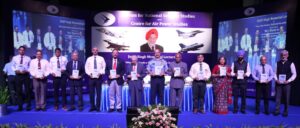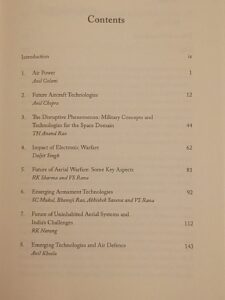
Centre of Air Power published a book titled “Air Power & Emerging Technologies”.


This article is one of the chapter in the book.
It may be said that warfare has acquired a new phase – technological war. The kind and quality of systems that a nation develops can decide the battle in advance and make the final conflict a mere formality or can bypass conflict altogether.
– Gen Bernard Schriever
Introduction
The origin of warfare is coincident with the origin of living beings. Human beings have made it into a specialised art by applying the knowledge of science to it. The nature of warfare is constantly changing with advancements in technology. Warfare essentially has two facets, offensive and defensive. Offensive action is aimed at causing damage to the enemy and defensive action is to save oneself from the enemy offensive action. In the olden days of fighting with handheld weapons, swords were used as an offensive weapon and shields were used to protect oneself.
Airpower appeared on the warfare scene quite recently as compared to other domains of warfare. Aviation itself started about 120 years back however, within a very short time it made forays into warfare giving birth to a new service. Warfare since then has gone through a rapid change with the use of the third dimension of air and space. Air warfare also has two facets of offensive application of airpower and defensive actions to mitigate the enemy’s offensive air actions. In air warfare, the division between the offensive and defensive campaigns is not as simple as it seems. The two campaigns are intrinsically interconnected.
In the last decade, the Air Defence (AD) operations have undergone an extensive change with new technologies being employed. Research is already in progress on new technologies like Quantum computing, Artificial Intelligence, Hypersonic, Nano Technologies and unmanned systems etc. These new technologies will have a transformational impact on the AD as well. It is worthwhile to trace the historical evolution of AD operations over the years, take stock of the present situation and crystal gaze into the future.
AD perspective
Continue reading “273: EMERGING TECHNOLOGIES AND AIR DEFENCE”

